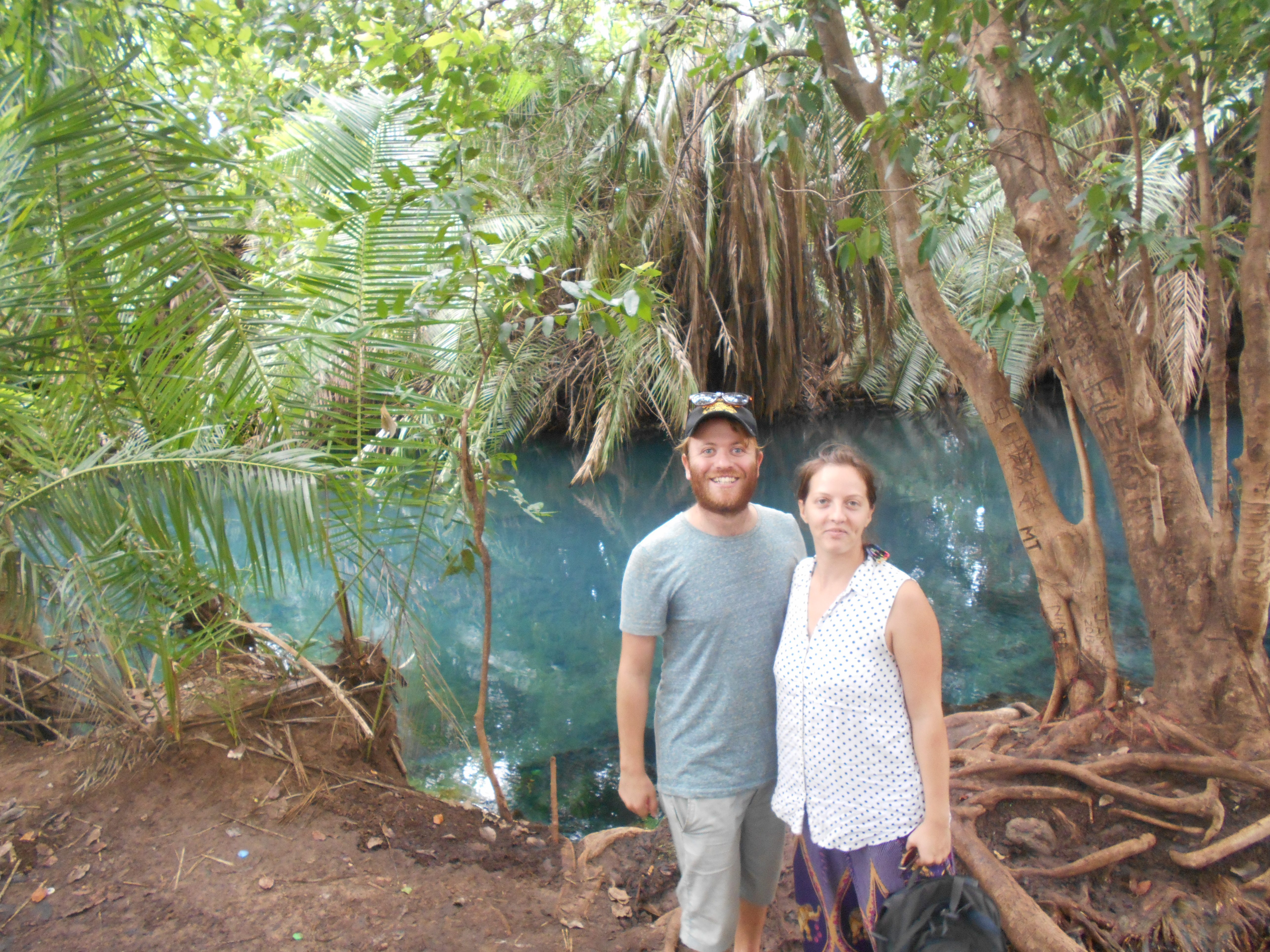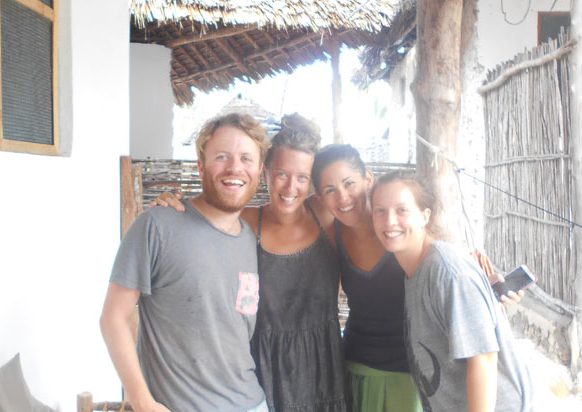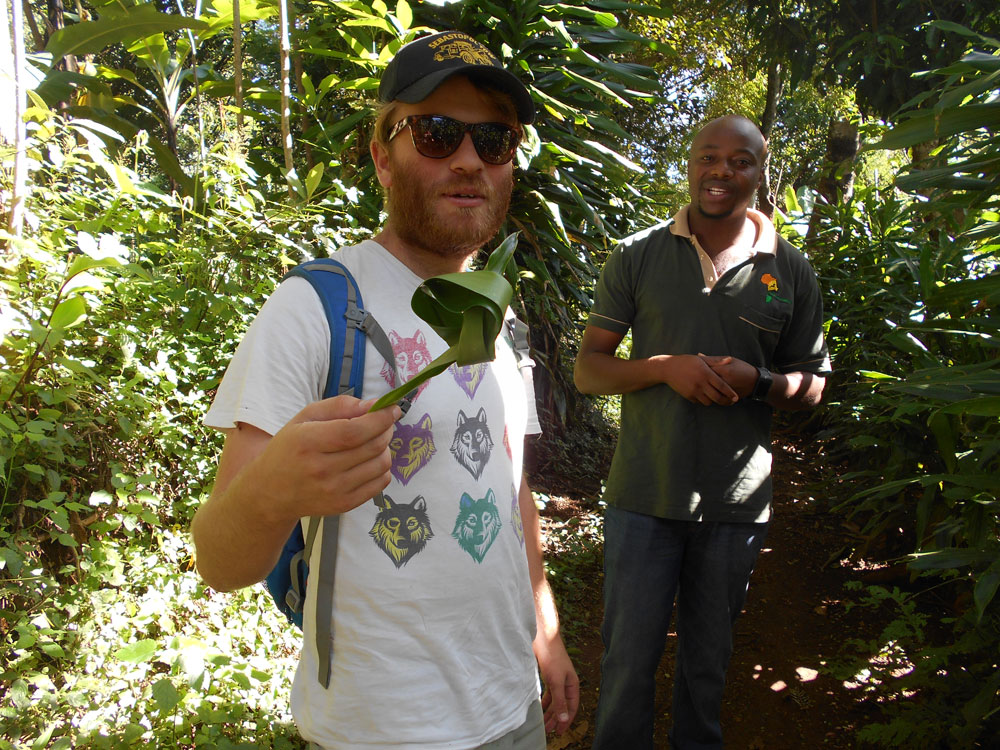Warm Springs in Moshi
After spending three-and-a-bit weeks with Phil and Ame at Pweza Beach Bungalows in Pingwe, Claire and I finally moved on with our trip. After spending a few nights in Stonetown, amongst the beautiful Muslim architecture and bustling, narrow streets it was time to head back to the mainland. Rather than risk our lives for a second time, as we stupidly did on our way to Zanzibar, we took a much safer option for the trip back. The ferry was much quicker than the dhow we travelled across on, taking just an hour-and-a-half compared to the four-and-a-half-hours it took us to get there. Not only this, but it was also infinitely more comfortable. We had seats, we were in the dry and we had a truly awful action movie to watch along the way – London has Fallen I think it was called.
One thing that did strike the pair of us was how much the large catamaran ferry was jumping around on the waves. We were travelling incredibly quickly, yet the rough sea made for a bumpy ride. Also, whilst being high up on the ferry, we were able to look out of the window and see just how rough the sea was. If we were out there on a little dhow, we would not have made it, I am sure of that. The waves were huge, and if they were causing our 100ft catamaran to jerk around, a little wooden boat would have had no chance. Turns out we were lucky that the sea was calmer on our trip over or we might have had to do some swimming.
After landing in Dar Es Salaam, Tanzania’s huge and busy capital city, we spent a night in a rather fancy hotel – we had wifi in our room – before setting off bright and early to get to Moshi. Moshi is a town in the north of Tanzania located at the base of Mount Kilimanjaro. It is near Arusha, the place where most trips to the Serengeti National Park begin and it is also around an hour’s drive from the border with Kenya. In order to make it all the way to Moshi in one day we had to get a coach. We opted to get a coach with Modern Coast and we were glad we did. Despite having to get up at four am, in order to make it to their office for five in time for departure, the trip was fantastic. An eight to nine hour bus trip had all the potential to be hellish, however, where other bus journeys have been cramped, uncomfortable and hot, this one was the complete opposite. These coaches are better than anything we’ve been on in the UK. We had paid a little bit extra for a ‘VIP seat’ which essentially meant that Claire and I each had a seat that was the width of two regular seats. We also got a nice little carton of mango juice and had plugs for charging our phones. This large seats meant we were able to put our feat up for the drive. Not only was the coach more comfortable than we were expecting but it also arrived pretty much on time, getting us in to Moshi at around three in the afternoon, meaning that five minutes later, we had arrived at Rafiki Backpakers where we were staying.
On our first morning in Moshi, Claire and I were joined by Daniel and were on our way to the famous hot springs around an hour away from the town. Daniel was also staying at Rafiki Backpackers and asked Claire and I the night before if we wanted to join him at the springs. He had managed to get a great deal with a local driver so we both jumped at the chance to join him. Daniel was a fun guy to hang around with and was on holiday from his job as an engineer in a gold mine in Burkina Faso. The company he worked for was Canadian and was creating a huge number of jobs in Burkina Faso, with I believe around eighty per cent of their work force being Burkinabe. Daniel worked long hours in a very dangerous part of the world. Due to the presence of ISIS in the area, he had to be escorted around by guards and the whole mining operation was heavily protected. It’s safe to say that chatting with an actual gold miner, especially one working in Burkina Faso who’d also done a stint in Suriname, was incredibly interesting.
Anyway, after an hour-and-a-half driving across the bumpiest roads we arrived at the hot springs. The three of us paid our ten thousand shilling entrance fee each – around three pounds – and entered the clearing. The springs were situated in a small wooded area, and there was a clearing leaving enough space for a small pop up bar and barbecue. Due to the fact that we were there during low season, Claire, Daniel and I had the entire springs to ourselves.
Despite them being advertised as ‘hot springs’ it is safe to say they could be more accurately described as ‘tepid – with sporadic spots of warm – springs’. Not that the lack of heat was bothering us. The springs were crystal clear, allowing us to see the smooth rock below. This meant the water had a light bluish and turquoise glean to it. The three of us swam around, finding new nooks and crannies by ducking under protruding trees and other foliage, before taking it in turns to hurl ourselves into the water off the giant rope swing. After around an hour we were joined at the springs by four girls, two German and two Austrian, who were volunteering in the nearby town of Arusha.
As well as being able to have loads of fun messing around in the water, there was also a fair bit of interesting wildlife on display. We saw a big turtle under the water just chilling, and we were also joined by loads of monkeys who were playing in the canopy above as we swam around. However, the most interesting creatures on display had to be the small fish in the water. If you sat on the edge and dipped your feet in, staying still, hundreds of these little fish would swarm around and start nibbling your feet. Much like the expensive treatments you can pay for back in the UK, these fish clean your feet of dead skin, but this time they do It free of charge. After spending a few hours chatting with everyone, drinking beers and swimming around in the springs, it was time to leave. Claire, Daniel and I jumped back in our car and made our way back to Moshi over the incredibly bumpy roads we had used on our way to the springs.









Comments are closed here.